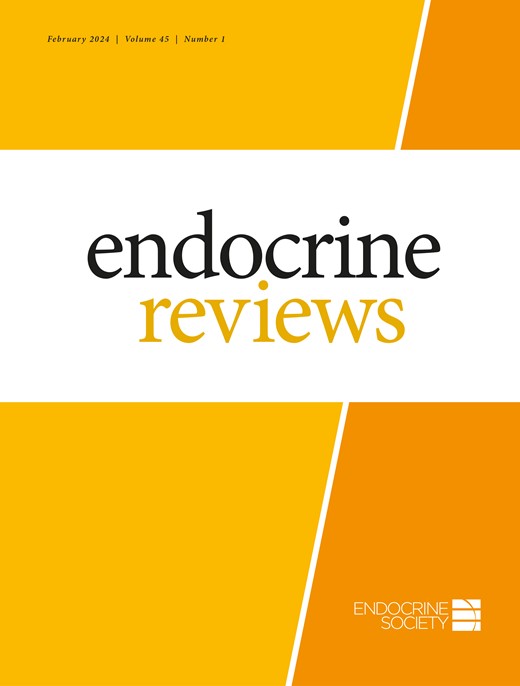The Chronobiology of Hormone Administration: "Doctor, what time should I take my medication?"
IF 22
1区 医学
Q1 ENDOCRINOLOGY & METABOLISM
引用次数: 0
Abstract
Pharmacotherapy involving hormones and hormone-derived molecules has various potential treatment targets. This includes addressing (partial) hormonal deficiencies, pursuing osteoanabolic effects, providing contraceptive options, or supporting gender-affirming transitions. In chronotherapy, the timing of the administration of active ingredients and different pharmaceutical forms is leveraged to maximize therapeutic efficacy while minimizing adverse effects, based on the principle that it is optimal for drugs to be administered according to the body's circadian rhythms. Just as a drummer sets the pace and keeps the rhythm steady for the entire band, the physician, through the application of chronotherapy, ensures the treatment regimen is harmonized with the body's internal clock. However, while this is a consolidated aspect for several endocrine treatments, for others, it represents a novelty. The new advancements in the treatment of osteoporosis, with the latest Parathyroid Hormone-Related Protein analogue abaloparatide, or in congenital adrenal hyperplasia with the new long-lasting hydrocortisone formulation, are notable examples. We herein summarized the state-of-the-art regarding the hormonal circadian rhythm to discuss in depth the evidence available regarding the correct timing of commonly administered hormonal therapies in adult patients. By offering clear indications this manuscript delves into the importance of harmonizing hormonal therapy with circadian rhythms through chronotherapy, exploring its potential to enhance therapeutic outcomes while minimizing adverse effects.激素管理的时间生物学:"医生,我应该在什么时间服药?
涉及激素和激素衍生分子的药物治疗具有多种潜在的治疗靶点。这包括解决(部分)激素缺乏,追求骨合成代谢的影响,提供避孕选择,或支持性别肯定的转变。在时间疗法中,利用活性成分和不同药物形式的给药时间来最大化治疗效果,同时最小化不良反应,其原则是根据人体的昼夜节律给药是最佳的。就像鼓手为整个乐队设定节奏并保持节奏稳定一样,医生通过时间疗法的应用,确保治疗方案与人体内部时钟协调一致。然而,虽然这是几种内分泌治疗的统一方面,但对其他人来说,它代表着一种新奇。最新的甲状旁腺激素相关蛋白类似物abaloparatide治疗骨质疏松症的新进展,或新的长效氢化可的松制剂治疗先天性肾上腺增生,都是值得注意的例子。我们在此总结了关于激素昼夜节律的最新进展,以深入讨论有关成人患者常用激素治疗的正确时机的现有证据。通过提供明确的适应症,本文深入探讨了通过时间疗法协调激素治疗与昼夜节律的重要性,探索其提高治疗结果的潜力,同时最大限度地减少不良反应。
本文章由计算机程序翻译,如有差异,请以英文原文为准。
求助全文
约1分钟内获得全文
求助全文
来源期刊

Endocrine reviews
医学-内分泌学与代谢
CiteScore
42.00
自引率
1.00%
发文量
29
期刊介绍:
Endocrine Reviews, published bimonthly, features concise timely reviews updating key mechanistic and clinical concepts, alongside comprehensive, authoritative articles covering both experimental and clinical endocrinology themes. The journal considers topics informing clinical practice based on emerging and established evidence from clinical research. It also reviews advances in endocrine science stemming from studies in cell biology, immunology, pharmacology, genetics, molecular biology, neuroscience, reproductive medicine, and pediatric endocrinology.
 求助内容:
求助内容: 应助结果提醒方式:
应助结果提醒方式:


